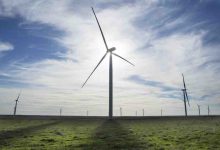An unexpected federal election victory for the conservative Liberal / National Coalition led by Scott Morrison signals a new environment where state, territory, corporate and community action will need to drive and bolster the momentum for renewable energy development in Australia.
With an inadequate renewable energy policy at the federal level, a significant amount of grassroots support for climate action and renewable energy development will be a main driver to stimulate new policy approaches and renewable energy projects.
Key market fundamentals, such as the cost competitiveness of renewable energy, will also continue to influence the deployment of wind, solar and, increasingly, battery storage to replace the anticipated retirement of over 25,000MW of thermal coal capacity by 2040.
In many respects the election result signals that the past 3 years of strong growth in the renewable energy development is anticipated to continue, despite, rather than because of, federal government policy. Current projections from the Clean Energy Regulator (CER) confirm renewable energy development of 5523MW is committed this financial year.
State governments will now need to do much of the heavy lifting to support higher levels of renewable energy development and grid augmentation.
With the ambitious Renewable Energy Targets (RETs) of Victoria (40% by 2025) and Queensland (50% by 2030) states will be under increased pressure to set higher state based RETs, announce further rounds of reverse auctions and implement additional measures to support grid expansion, electric vehicles and battery storage.
In NSW, a renewed focus on renewable energy growth may not see an explicit state based target but instead an acceleration of its Transmission Infrastructure Strategy. With the Coalition in power, the impact of state and territory policy will be a key factor influencing the investment environment for renewable energy development over the next three years.
Ongoing development of corporate Power Purchase Agreement’s (PPA) will also be a key market driver. The maturing of initiatives such as the Business Renewables Centre – Australia which acts as a clearing house for aggregating off takers and connects buyers with generators and other service providers will continue.
We can expect to see more corporates also join the RE100 movement, with major banks such as Westpac and ANZ having already signed on and more planning to follow. As corporate Australia continues to see the moral and financial imperative of responding to climate change, and the ongoing impact of volatile energy prices, we expect to continue to see a significant strengthening and deepening of the corporate PPA market.
Support for two major pumped hydro projects received bipartisan support throughout the election period, the A$4.5 billion Snowy Hydro 2.0 (2000MW) and Tasmania Battery of the Nation initiative, comprising a second HVDC undersea interconnector between Tasmania and Victoria. It can be expected that these projects will also continue to be expedited.
Market institutions like the Australian Energy Market Operator (AEMO) and the Energy Security Board (ESB) will also play key roles, with the strong support of state ministers for market reform and system planning at COAG Energy Council expected to counter the views of the incoming federal energy minister.
AEMO’s Western Victorian Transmission Upgrade competitive tender is a strong signal for more competition and innovation in grid augmentation, as it works to accelerate the implementation of the Integrated System Plan (ISP).
If the tender is successful in driving down price and accelerating development of urgently needed grid upgrades, we expect to see AEMO seek to adopt this approach across the National Electricity Market (NEM). Market reforms such as the streamlining of the Regulatory Investment Test – Transmission (RIT-T) will also continue to be pursued by the ESB and implemented across the market.
The clean energy transition will continue in Australia, and levels of activity will remain strong overall due to the need to shift to cheaper and cleaner forms of generation and reduce exposure to power price volatility. This activity we expect to be underpinned by ongoing purchasing of offtake by state based auctions and corporate PPAs.
While the re-elected federal government’s climate and policy agenda is neither coherent nor comprehensive in reducing regulatory and technical hurdles or supporting jobs and investment in vulnerable communities’, it will remain a key focus for state and local governments, AEMO, the ESB, corporates and communities.
Given the strong election result for the Coalition in Queensland and the Hunter Valley in NSW, a clear focus must be put on the jobs and economic security outcomes which can be achieved from broad scale renewable energy development and the creation of new zero carbon fuel exports such as hydrogen.
Significant potential exists for the renewable energy industry to make economic development outcomes and community benefit sharing the standard approach for all renewable energy projects.
Renewable energy developers and investors who can identify innovative and leading ways to help achieve a more “just transition” in rural and regional Australia, with projects which tap strong resources and achieve excellent technical performance will be best placed to secure offtake and respond to the challenges in this new political and policy environment.
Simon Corbell is chief advisor with Energy Estate and a former ACT climate minister and special advisor to the Victoria government. Source: Energy Estate. Reproduced with permission.










